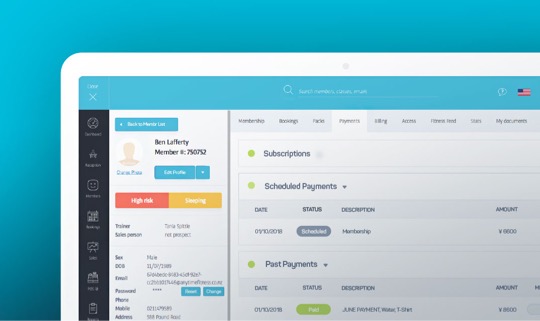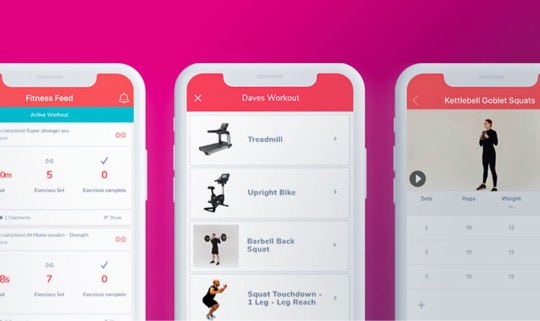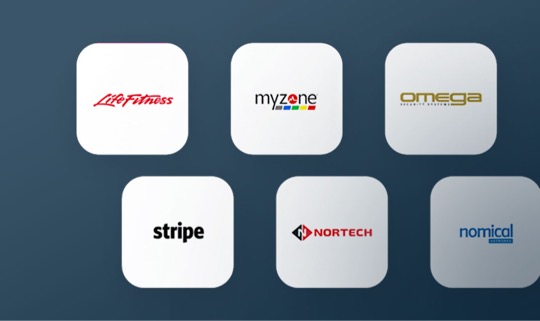Over the last few years, the UK has followed the US example and increased the number of low-cost fitness clubs. This shift in the market, however, brings a new level of competition that gym owners might not have considered.
We are past the days of being able to open gyms at sub £20 per month membership where we just let the members join.
If your gym’s location is in an area densely populated enough to support 3000+ members, then you are likely to have competition on your doorstep from another low-cost provider.
The problem
Fitness clubs often focus their entire time and energy on signing up new members, and end up failing to support the new clients at the start of their lifestyle journey, which results in high churn rate.
What can you do?
There are many things that you can do to offer continuous engagement and support to new and existing members, as long as you’re willing to change your mindset.
The next 5 points will not change your business overnight, but they will hopefully make you think about what small changes you could implement with the rest of your team.
. . .
1. Set the right expectations
Retention starts with sales. If you are selling memberships in the low-cost sector focus on selling and delivering your core product well.
If you over-promise in your marketing and sales process, you’re setting yourself up for failure when on day one your new member turns up and realises the dream you have sold doesn’t quite exist.
Getting your brand messaging right is the first step. Then it’s about meeting your clients’ expectations!
. . .
2. Know your PT model(s)
The majority of budget operators have opted for rent in return for hours on the gym floor.
When done well, this model allows for very few paid-for staff with personal trainers continuously there to help deliver classes, inductions and interact with your members.
When done badly…the result is a large group of disillusioned trainers who act independently of the goal of your business.
When going for this model (and I am going to still stick by the fact that when done well it provides best value for both PT’s and operators) you need to ask yourself a few questions….
- How many hours do I need from each PT? – not how many hours I want, but Asking trainers to do 20 hours of PT per week in exchange for being able to work on the gym floor will guarantee you get little or no engagement from the trainer when they are ‘working’ for you. However, getting only 1 hour per week will mean you still have a huge staffing bill. My suggestion would be two, four- hour shifts per week and make sure you allow trainers to do set shifts so that they can book their PT around their commitment to you.
- How many PTs should I recruit? If you get 5% PT penetration of your membership base you won’t be doing too badly. A PT will need circa 20 clients to stay with you long term so they will need on average 400 members to recruit their clients from, so use that calculation to cap your PT numbers there. If you just keep recruiting you are setting your PTs up to fail.
- How can you make them part of the team? Simple things such as inviting PTs to team meetings and work Christmas parties will go a long way in helping them feeling part of what you do and buying into your vision and brand.
Once you have worked out what your offering is to a PT and you have done this in a way that makes it fair and attractive for them, you will know how many hours of gym floor support you have from your team.
Don’t just send the PTs off doing out-reach and cleaning kit – get them using their skills because they will add far more value to you by supporting your members than being a glorified cleaner. I have listed a few examples of things they can do but hopefully you should have loads more ideas of your own:
- Run weight loss seminars
- Teach group exercise classes
- Deliver inductions and consultations.
- Teach chargeable small group PT
- Interact on the gym floor with members who have been flagged as high risk on your software
- Send online training plans and meal plans to members who have requested them online.
. . .
Did you know that we talked to PT experts in our mPowered fitness podcast?
. . .
3. Automate communication
There is a lot of research around these days which tries to support the belief that the only way to interact is in the club on the gym floor and not online. Yes, having good quality interaction on the gym floor is going to be the best way to have a positive effect on how quickly that member comes back to the gym; however, you should not dismiss the positive effect you can have by using good quality online communication.
You might have seen the TV advert for a famous dating website that advertises the fact that 1 in 3 relationships now start online. If an online communication can be powerful enough to make you fall in love surely the same online approach can help you build a sense of brand loyalty and community worth? Of course it can and these are two things that will positively effect the likelihood of the member leaving your gym. What do you mean? Not clear?
One of the key things to mention though is the quality of these emails – the content. Digital marketeers are a fantastic working example of how well this can be done, grouping you by your online behaviours and then feeding you relevant content at a relevant time, often using language they know you will relate to.
Just sending emails to everyone all the time will not help in any way, it will actually probably achieve the complete opposite.
Think of the things you track on your management software that will help you to chunk down the members and ensure each bit of content they receive is relevant to them:
- If they joined online or in the club
- If they attended an induction
- What classes they attend and when they got to them
- What their goal is
- Heath stats that they log
- Exercise that they log
- What previous emails they have opened
- Total gym usage
- Change of usage
- Last visit
. . .
4. Make your primary offering attractive
It is probably a given that in a budget club you will get the option to have 1-2-1 PT, probably at a price of two times the monthly cost of your membership. As mentioned in point 2, if you are getting 5% of people to take 1-2-1 PT you are not doing too badly. The issue is what options do members have if they cannot justify the expense of 1-2-1 PT? Are we saying you can pay £40 per hour and get no support? Have changed this but not sure it’s what you mean, it’s not clear.
As an industry we need to get away from the idea that if you won’t buy a premium rate product that a PT cannot help you. We should have a fitness product that is varied enough so that every member who joins our gym can (if they need it) afford the support of one of our trainers. PT should have all of the following services at their disposal:
- 1-2-1 PT
- Small Group PT
- Large group / Bootcamp PT
- Online PT
With this four pronged approach PTs should be confident that each time they deliver a taster session the member will buy something from them. The question now is ‘what product is best for this member?’ not ‘can this member afford personal training?’
As an operator you then have to make a decision about how you support your PTs in delivering this multi product approach. You are really left with two options:
- Set up the products as gym products delivered by your trainers so all sessions are set by the manager who manages all payments and online PT sign ups. The benefit of this is mostly financial and quality control, however, this will take up a lot of valuable management time and keeping trainers motivated to deliver such sessions can be hard without good financial remuneration.
- Give the PTs a structure to set up these sessions but allow them to manage their own timetable, payments and clients. This gives the PT an opportunity to set up a true multi channel business within your gym and although it may often not generate you any direct revenue you have to think about how many members will be getting continued support from a trainer when this model is executed correctly.
. . .
5. Offer group exercise
I have left group exercise until last because I think it has real relevance to the other sections of this blog – setting your members’ expectations, the amount of hours you have from your PT team and also your fitness product.
The jury still seems to be out about whether we should or need to have a full group exercise timetable in a budget gym. We have some operators delivering full group exercise timetables, even including Les Mills classes. On the flip side there are operators who sign up over 5000 members without any group exercise at all.
The main thing to consider is does the cost of running a group exercise timetable out-weigh the increased sales and length of stay of engaged members?
When setting your timetable, you need to think about what you and fundamentally your members are going to get out of it? If you are simply going to put on a few sessions per day on the gym floor by disengaged PTs you might see a few more membership sales as you have ‘ticked a box’ during your sales tour. But do you think you will reach the expectations set during the sales process? Definitely not, especially if you advertised it as “Manchester’s best class timetable”, for example.
If you are going to get the PTs to run your classes on their fitness hours make sure they are teaching classes that utilise their skills and give them good exposure, if they feel they are in the ‘shop window’ for selling PT and their PT products you can usually get a lot out of these guys at little or no cost. However, if you have a 6ft 4ins 18 stone body builder dancing around teaching aerobics you are probably not going to have the most confident and enthusiastically delivered class.
If you are going to run a class timetable, do it properly. Invest in it to get a true return. If you are not prepared to do so, then you are probably best focusing on your core product and move back to point 4 in this blog!
(Fitness) Food for thought
The final thing to consider in the budget sector is ‘Should classes be included in the gym membership?’
We have seen a few of our clients run a ‘two tiered’ approach to their pricing model, with a slightly increased membership price for people who have classes included in their membership.
One of our clients did this very successfully charging £5 per month more for their class membership, which surpassed the charge for the Les Mills’ licence and for paying the best freelance instructors in the area to teach over 50% of the classes.
This operator’s goal was not to generate loads of additional profit quickly from these memberships, but only to break even on the costs of the timetable leaving him with a large percentage of members being regularly engaged with fantastic quality classes.
So hopefully this has given you a little food for thought and started your thinking process about what you are doing to provide a service that meets and exceeds the expectations set during your sales and marketing process.














